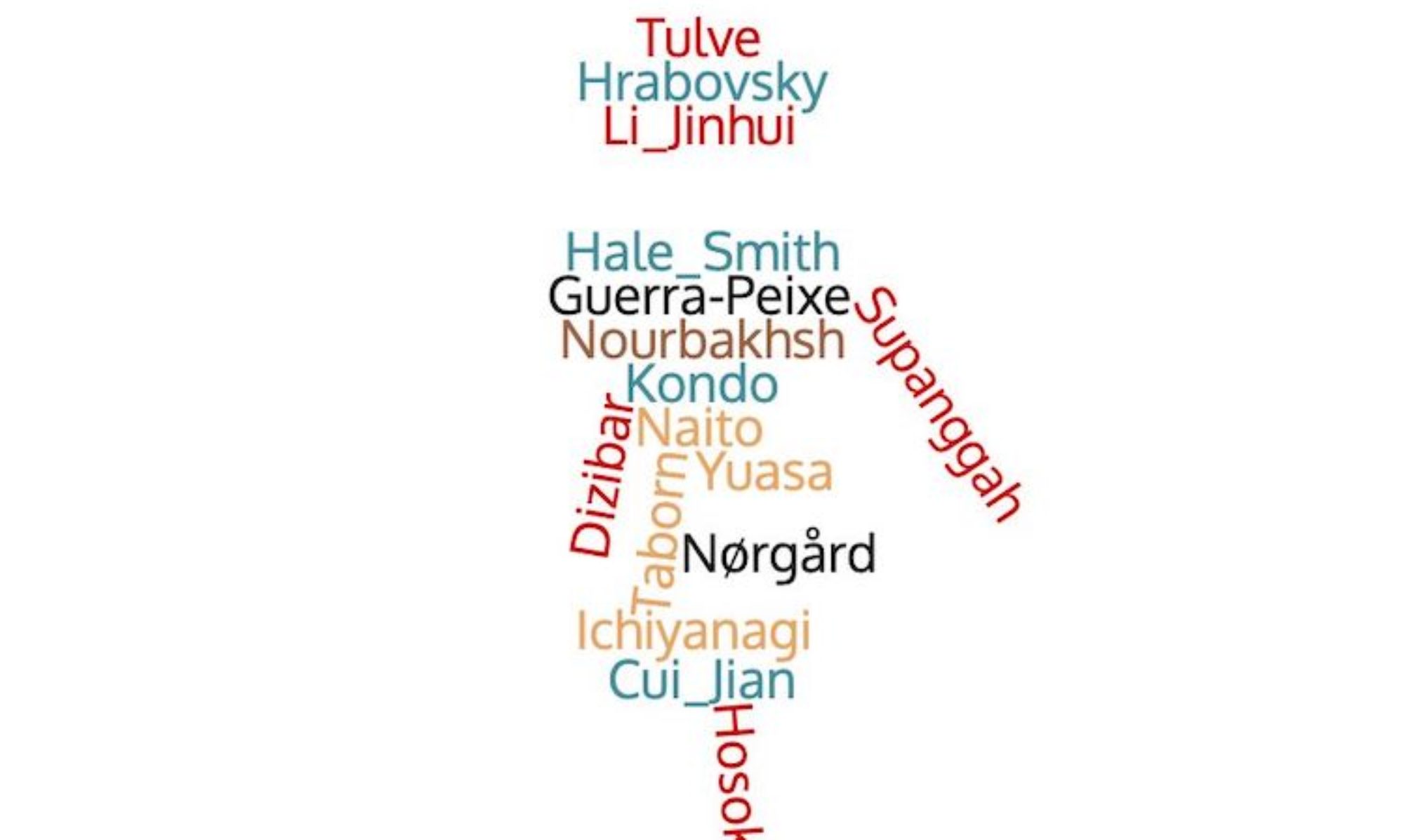By Mao Mengdan and Min Lingkang
This post is part of a series on 100 modern conservatory-trained Chinese composers from 1912 onwards who wrote symphonic, ensemble, and solo instrumental music using Western instruments, as well as choral and solo vocal music, adopting Western tonality or avant-garde techniques. They are regarded as key historical figures in and drivers of modern Chinese music history.
Tan Xiaolin (1912–1948) was a renowned Chinese composer and pipa player, born in Shanghai, with ancestral roots in Kaiping, Guangdong. His works are characterized by a strong chamber music style, striving to break free from the constraints of traditional European musical techniques and incorporating 20th-century neoclassical compositional techniques with a fresh Chinese style. His music possesses the elegance and profoundness of Chinese court and literati music.
From a young age, Tan was passionate about Chinese traditional music and could play various instruments at the age of 7, especially excelling in erhu and pipa. He began self-studying composition at the age of 11.
In 1931, he enrolled in the Shanghai National Conservatory of Music, majoring in pipa and concurrently studying composition. In 1937, he switched his major to study composition with Huang Zi. During his time at the conservatory, he composed Chinese instrumental pieces such as “Midnight Chant” and “Spring Light on the Lake,” collected and organized a large number of Southern Jiangsu wind and percussion scores, and founded the “Hujang National Music Society” (“national music” or guoyue means Chinese music). He actively participated in progressive activities such as the “Aid Suiyuan Concert” organized by the progressive music community in Shanghai during the Anti-Japanese and (Chinese) Salvation or kangri jiuwang movement, during the period of Japanese invasion and occupation of parts of China (“progressive” or jinpu in this context refers broadly to Chinese modern, including anti-feudal and anti-Japanese-invasion politics).
In 1939, Tan went to the United States for further study, first attending the Oberlin Conservatory of Music and then transferring to the Yale School of Music two years later. He studied theory and composition under N. Lockwood, R. Donovan, and Paul Hindemith.
In 1942, under the guidance of Hindemith, Tan specialized in composition techniques and became one of Hindemith’s prized students. In the United States, Tan held several solo concerts featuring Chinese instruments. Hindemith accompanied him on viola and conducted performances of his works, including “Duet for Violin and Viola,” and “Romance for Viola and Harp.” Other works of the time include “String Trio,” “Since You Went Away” (solo voice), and “Parting” (solo voice). Among these, “String Trio” won the J.D. Jackson Prize.
In 1946, Tan returned to China and was appointed as the head of the composition department and professor at the National Conservatory of Music. Due to his profound knowledge, dedication to teaching, and empathy and care for progressive students, he was deeply loved by his students.
After returning to China in 1946, he was employed by the Shanghai National Conservatory of Music as the head of the composition department and professor. In his teaching practice, he introduced the theories and composition techniques of the modern American music school represented by Hindemith, and composed works such as the unaccompanied mixed choral work “Song of Righteousness” and the solo female voice “The Little Path.”
Tan Xiaolin passed away in August 1948 at the young age of 37 due to illness.
The “Duet for Violin and Viola” is a chamber music piece composed by Tan Xiaolin in 1943. The work gained significant recognition in the United States, earning Tan a scholarship from Yale University and a performance in Chicago, with Hindemith personally playing the viola part and recording the piece, receiving high praise from the American music community.
The piece uses the structure form of Western multi-movement suites, but each movement has its own distinct characteristics. The entire work consists of four movements, forming an overall “fast, slow, fast” pattern through the intense dynamic development of the first movement, the philosophical contemplation of the middle two movements, and the passionate emotion of the fourth movement.
The first movement (Allegro Vivace in B-flat major) has a ternary form. In the first section, short repeated notes and sequences are combined with leaps and slurs in the main theme, using a variety of violin playing techniques to vividly depict an enthusiastic and active musical image, as if sunlight illuminates the earth and everything competes for brilliance.
After the theme is presented in parallel in A and C in the second section, a six-measure connecting phrase leads to another iteration.
The third section is a shortened recapitulation, where the music pauses on the unstable D key, leading to a slow coda that is a variant of the main theme formed by rhythmic reorganization, full of expressive color and highly infectious. The final chord is a dominant chord in pentatonic la-mode, which allows the feeling of longing to linger.
You can watch a performance of Tan Xiaolin’s “Duet for Violin and Viola” at the following link: https://www.bilibili.com/video/BV1z44y187yV?share_source=copy_web&vd_source=4681f0684a5c74dd125d397ca5882ba3
